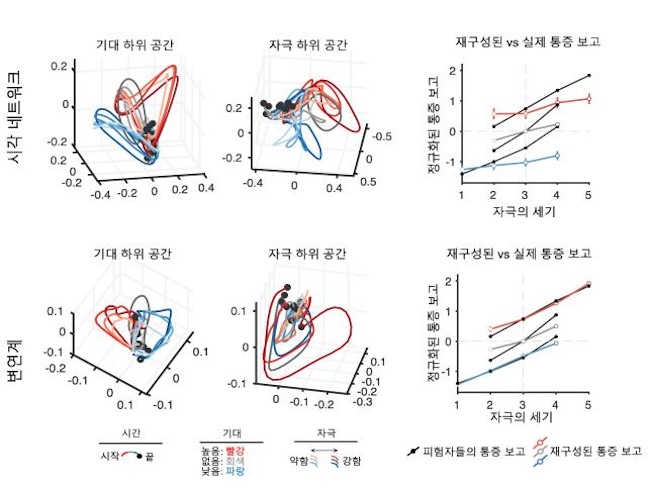
A team of South Korean researchers has made a significant breakthrough in understanding how the brain processes pain. (Image courtesy of IBS)
SEOUL, Sept. 24 (Korea Bizwire) – A team of South Korean researchers has made a significant breakthrough in understanding how the brain processes pain, revealing a complex interplay between expectation and actual stimuli.
The study, led by Woo Choong-Wan and Yoo Seng-Bum from the Center for Neuroscience Imaging Research of the Institute for Basic Science (IBS), utilized functional magnetic resonance imaging (fMRI) to observe brain activity during pain perception.
Their findings, published on September 12 in the journal Science Advances, shed new light on the intricate neural processes involved in pain sensation.
“Pain is not merely a physical response to external stimuli,” Woo explained. “It’s a complex interaction of biological and psychological factors.”
The research team found that the intensity of perceived pain is influenced not only by the strength of the external stimulus but also by the individual’s expectation of how painful the stimulus will be.
In their experiments, subjects who anticipated more pain reported higher levels of discomfort, even when exposed to the same level of heat stimulus as those with lower pain expectations.
Contrary to initial hypotheses, the study revealed that information about both predicted and actual heat stimuli exists not only in the somatosensory regions of the brain but also in visual areas.
This suggests that lower-tier networks, including motor and sensory regions, simultaneously process both predictive information and actual stimulus data.
However, the integration of these two types of information occurs exclusively in higher-tier networks, such as the default mode network — associated with mind-wandering states — and the limbic network, which processes emotional stimuli.
“While previous studies have focused on linking specific brain regions to pain information, our research has uncovered the mathematical principles behind how different pain-related information is integrated in the brain,” Woo said.
He added that these findings could potentially lead to new strategies for treating chronic pain.
The study employed advanced mathematical analysis to dissect brain activity across different cortical layers, providing a more nuanced understanding of pain processing than previous research.
Kevin Lee (kevinlee@koreabizwire.com)






